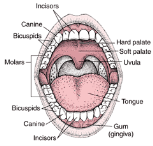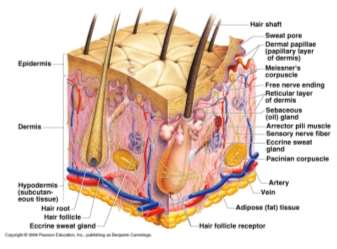Introduction to Systems in the Body
| ✅ Paper Type: Free Essay | ✅ Subject: Physiology |
| ✅ Wordcount: 878 words | ✅ Published: 11 Sep 2017 |



THE DIGESTIVE SYSTEM
The function of the digestive system is to digest and absorb. The digestive system breaks down food into smaller molecules, which are absorbed as nutrients into the blood to be used for growth, repair and energy.
The digestive system consists of several organs. The mouth, pharynx, oesophagus, liver, stomach, rectum, gallbladder, large intestines, small intestines and the pancreas.

Mouth: Breaks down food through chewing to make pieces that can be easily digested. Saliva mixes with the food to begin the breakdown.
Pharynx: The pharynx (also known as the throat) muscular walls helps the process of swallowing and serves as a pathway for the movement of food from the mouth to the oesophagus.
Oesophagus: Carries liquids, food and saliva to the stomach.
 Stomach: The stomach consists of strong muscular walls which physically churn and breakdown the food further. The stomach lining releases enzymes which continues to chemically breakdown the food. The enzyme Pepsin is found in the stomach and is responsible for the breakdown of protein. The stomach also contains hydrochloric acid which help kill bacteria that is found on food.
Stomach: The stomach consists of strong muscular walls which physically churn and breakdown the food further. The stomach lining releases enzymes which continues to chemically breakdown the food. The enzyme Pepsin is found in the stomach and is responsible for the breakdown of protein. The stomach also contains hydrochloric acid which help kill bacteria that is found on food.
Small intestines: The small intestines is around 5 metres long and consists of two parts – the duodenum and the ileum. The duodenum is the first 25cm of the small intestines and the ileum forms the rest. The duodenum is the main site of digestion and most absorption takes places in the ileum.
The small intestines breaks down the food using enzymes that are released by the pancreas and bile released by the liver. The small intestines are also responsible for absorbing nutrients.
The walls of the small intestines contain tiny folds called villi, there are approximately four to five million in the ileum. The villi has three adaptions which ensures that the absorption of digestion products is very efficient. The first adaption is the large surface area, this allows absorption to happen more quickly and efficiently. The second adaption is the many blood capillaries the villi contain, these are responsible for absorbing nutrients, glucose and amino acids. The last adaption is the villi walls are only one cell thick, this will allow dissolved molecules to pass through the walls quickly.
Large intestines: The function of the large intestine is to absorb water and essential vitamins from the remaining indigestible food molecules.
Integumentary System
The largest organ in the human body is the integumentary system which consists of the skin, hair and nails which form the body’s outer covering. They help protect internal organs, provide a barrier to prevent against infectious organisms and regulate temperature of body.
There are three layers of skin. The Epidermis is the thin, top layer of the skin and is made up of four cell types: keratinocytes which produces keratin (waterproofing fibrous protein), melanocytes which produces melanin that gives skin its colour, langerhan cells which help the immune system fight antigens, and merkel cells which help with touch reception.
The Dermis is the thicker, middle layer of skin consisting of connective tissue which is found in the papillary layer of the dermis, nerves, blood vessels glands and hair follicles.
 The hypodermis is the deepest layer of skin. This layer helps insulate the body and protect internal organs. The hypodermis consists of a type of connective tissue called adipose tissue which stores excess energy as fat.
The hypodermis is the deepest layer of skin. This layer helps insulate the body and protect internal organs. The hypodermis consists of a type of connective tissue called adipose tissue which stores excess energy as fat.
The skin contains oil glands which secrete essential oils to keep skin soft and moist, which in turn will help protect the skin. Sweat glands in the skin cool down the body by secreting watery sweat which evaporates in the air. Thermoreceptors are found in the dermis layer of the skin and they detect a change in temperature.
Circulatory System
The circulatory system, also known as the cardiovascular system, consists of the heart, the lungs and a network of vessels which carry blood. The pulmonary circulatory system sends oxygen-deprived blood away from the heart to the pulmonary artery and to the lungs, and then returns to the with oxygenated blood through the pulmonary veins.
Oxygen-deprived blood enters heart through the right atrium and flows through the tricuspid valve and into the right ventricle. It is then pumped through the pulmonic valve into the pulmonary artery and travels to the lungs. When into the lungs, carbon dioxide is released from the blood and oxygen is absorbed. The pulmonary vein sends the oxygenated blood back to the heart.
 THE HEART
THE HEART
The heart has many components to help with blood flow. These components are:
AORTA = this is the largest artery in the blood. It carries oxygenated blood.
VENA CAVA = this is the largest vein in the body. It carries deoxygenated blood.
RIGHT ATRIUM = receives blood from the body via the vena cava.
LEFT ATRIUM = receives blood from the lungs via the pulmonary vein
RIGHT VENTRICLE = receives blood from the right atrium and sends the blood to the lungs.
LEFT VENTRICLE = receives blood from the left atrium and sends the blood to the body.
Nervous System
The nervous system involves two components: the central nervous system (CNS) and the peripheral nervous system. The central nervous system consists of the brain, spinal cord and nerves. The peripheral nervous system consists of sensory neurons, ganglion (clusters of neurons) and nerves that connect to each other and also to the central nervous system.
Cite This Work
To export a reference to this article please select a referencing stye below:
Related Services
View allDMCA / Removal Request
If you are the original writer of this essay and no longer wish to have your work published on UKEssays.com then please click the following link to email our support team:
Request essay removal


